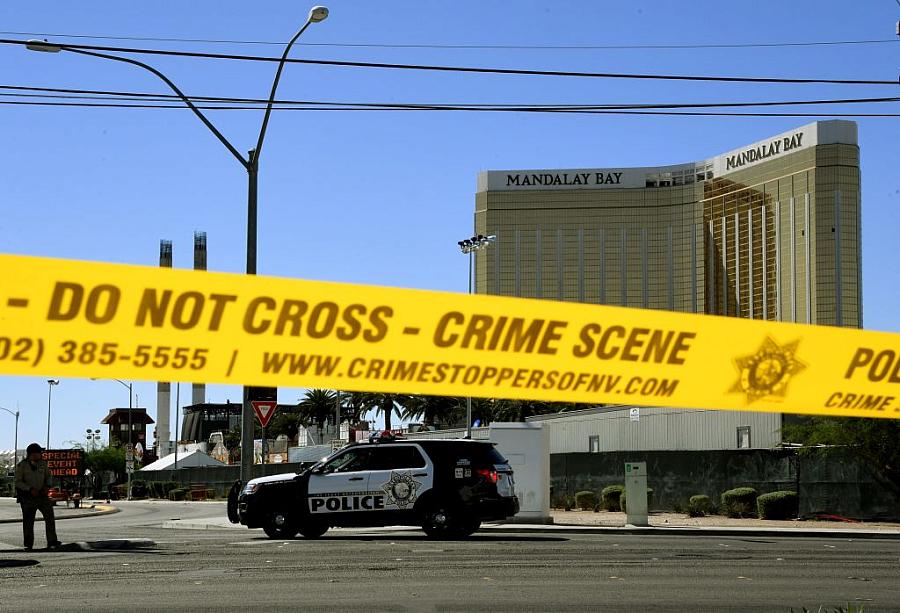‘We really had no idea what we were getting into’ — How newsrooms and hospitals can prepare for mass violence

(Photo: Mark Ralston/AFP/Getty Images)
Journalists dealing with bombings, active shooters and other public emergencies need to be quick on their feet. Information comes out fast and with varying degrees of accuracy. Victims surface, loved ones panic and even public officials don’t always have the answers. But advance planning from both newsrooms and health systems can help get information out efficiently and accurately, as speakers at the Association of Healthcare Journalists Conference explained last week in a panel discussion I moderated.
Rachel Crosby, a crime reporter for the Las Vegas Review-Journal, was relaxing at home when she caught wind of the Route 91 Harvest Festival shooting on Twitter. No one knew whether there was one shooter, or multiple. Concert attendees were fleeing the stage, unsure where the gunshots were coming from. As Crosby watched it unfold, she began to gather her reporting gear. Within minutes, her editor texted to dispatch her.
“We really had no idea what we were getting into,” she said.
In a matter of hours, Crosby learned from a trusted police source that at least 20 people had been shot. The tallies later settled at 58 dead and more than 800 injured.
Throughout the night, Crosby juggled between emailing law enforcement and health officials, absorbing information at a hospital near the scene and reaching out to victim families on social media. She reported the intel back to her editor and disseminated most of it on Twitter.
She said having sources in her pocket from prior reporting was crucial to getting information out quickly. So was having a mass event coverage plan — her news team had covered New Years festivities on the Las Vegas strip many times, and most reporters knew the lay of the land.
But they still couldn’t predict certain developments, such as the fact that most victims drove in civilian cars to the closest hospital, even though the city’s larger, trauma-ready facility would have been the better choice.
“You have to remember that people are in a panic, they’re not using logical thought,” Crosby said.
Dr. Marjorie Bessel, chief clinical officer for the Banner Health system, said medical facilities need to have a ready-to-launch protocol for emergency events. Medication supplies, adequate staffing, extra cots, alerts for families and a slew of other needs become paramount when a large influx of patients arrives. If hospitals don’t have a plan in place, the results can be fatal.
She said Banner Health staff are trained and drilled on emergency preparedness protocols regularly, Bessel said.
“How do you prepare for something that would overwhelm your usual resources?” Bessel asked. The protocols come into play even when violence isn’t a factor, such as during a mass disease outbreak or a large-scale event such as the recent solar eclipse, she added.
But for reporters, Crosby said covering a mass violence event is an experience unlike anything else. When the adrenaline kicks in, it’s easy to work for hours without fully processing your surroundings, she said. And even after the incident is over, there’s always more to report. She said her staff is still investigating the exact actions taken by law enforcement and health officials that night.
Find resources for covering mass shootings from the Dart Center for Journalism and Trauma here.

